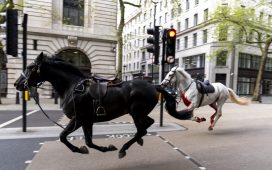On a chilly winter’s day in Somerset, I’m serenaded by the whistling of wigeons. The sound is made by the males, whose handsome chestnut head daubed with custard yellow marks out these plump little birds from their fellow dabbling ducks.
The name “wigeon” can puzzle new birders, who perhaps expect a cousin of the pigeon, rather than a duck. Both names are borrowed from medieval French, with wigeon thought to derive from a verb meaning to whine or shout – which, given the bird’s tuneful sound, does seem rather unfair.
Only about 200 pairs of wigeon breed in Britain, making it scarcer than the firecrest, Dartford warbler and little egret. But almost half a million birds arrive here in autumn from Iceland, Scandinavia and Arctic Russia to take advantage of our mild winter climate and plentiful food. As well as feeding in shallow water, wigeon also graze on land, plucking tender shoots of grass with their short, stubby bill.
The hides at the RSPB’s Greylake reserve, and at the Somerset Wildlife Trust’s Catcott Lows, are the ideal place to get closeup views of these striking birds and admire the subtleties of their plumage. Meanwhile for me, seeing flocks of wigeon rise into the skies over our coastal estuaries, and uttering that sharp, evocative whistle, is one of the true highlights of winter.








